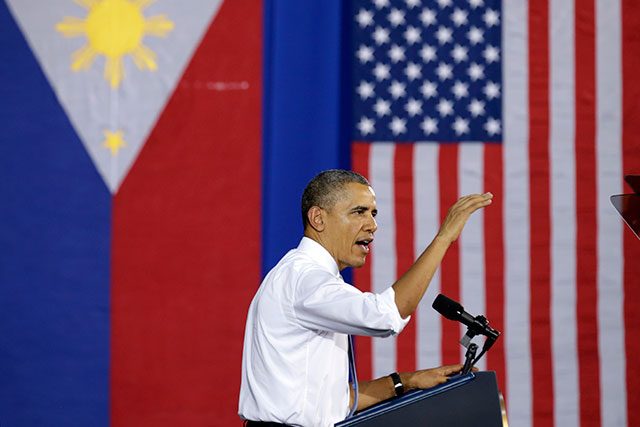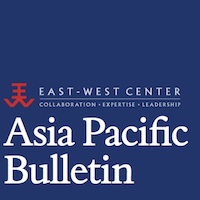SUMMARY
This is AI generated summarization, which may have errors. For context, always refer to the full article.

President Barack Obama’s visit to the Philippines, the last leg of his recent 4-nation Asian tour, produced a new bilateral defense agreement that was touted by some observers as the single most significant outcome of his regional foray. The agreement was said to contribute to his goals of reassuring allies and signaling that the United States is serious about its “rebalance” to Asia.
How does the signing of the 10-year Philippines-US Enhanced Defense Cooperation Agreement (EDCA) help promote overall security relations between the United States and the Philippines and how might the agreement impact ongoing efforts to manage the territorial and maritime disputes in the South China Sea?
 When the Philippine government of Corazon Aquino voted in 1991 to close Clark Air Base and Subic Naval Base – major American military facilities in Southeast Asia – at the end of the Cold War, the strategic importance of the alliance to both parties declined. Notwithstanding cordial relations with China in the past and active multilateral diplomacy with ASEAN, Philippine governments since the 1980s have sought to persuade the United States to include Manila’s territorial claims in the South China Sea in the scope of their mutual defense obligations.
When the Philippine government of Corazon Aquino voted in 1991 to close Clark Air Base and Subic Naval Base – major American military facilities in Southeast Asia – at the end of the Cold War, the strategic importance of the alliance to both parties declined. Notwithstanding cordial relations with China in the past and active multilateral diplomacy with ASEAN, Philippine governments since the 1980s have sought to persuade the United States to include Manila’s territorial claims in the South China Sea in the scope of their mutual defense obligations.
Absent such guarantees, many Filipinos believe the US-Philippines Mutual Defense Treaty (MDT) to be one-sided, committing Philippine support for US strategic objectives while failing to secure US support for the one external defense issue that truly matters to Manila.
Counter-terrorism and natural disasters have helped to sustain low-level bilateral security cooperation since the closure of the bases. However, it has only been since 2008 – amidst China’s rising military ambitions and capability, the escalation of tensions between China and some ASEAN countries and Japan over conflicting territorial and maritime jurisdiction claims, and growing US-China competition for influence across Asia – that the convergence of strategic interests between Manila and Washington has been revived.
Thus, the Obama visit stressed in stronger terms than before the value of the Manila-Washington alliance that was first forged in the 1951 Mutual Defense Treaty. Obama acknowledged the strategic location of the Philippines and stated that his government has an “ironclad commitment” to the defense of the Philippines in the event of external attack.
The new EDCA would grant American troops, ships and planes rotational access to facilities of the Armed Forces of the Philippines – but not permanent bases which are prohibited under the Philippine Constitution – with the result of reducing response time should an external threat from a common adversary crystallize.
Obama, however, was otherwise nonspecific about the South China Sea disputes, merely expressing support for the Philippine approach of seeking arbitration under UNCLOS for its dispute with China over maritime resources and entitlements in the South China Sea. He also reiterated the longstanding US position that “international law must be upheld, the freedom of navigation must be preserved and commerce must not be impeded.”
He was, however, explicit in saying that the new agreement and the US “rebalance” as a whole were not aimed at containing China. “Our goal is not to counter China, our goal is not to contain China. Our goal is to make sure that international rules and norms are respected, and that includes the area of maritime disputes.”
The message that the Philippines should draw from the visit is that the EDCA provides it with a window of opportunity to work doubly hard on its own defense modernization, with US assistance through training and acquisitions, toward the end-goal of developing what Manila has called “minimum credible defense” capability.
A larger, more flexible US presence in dispersed locations working in close coordination with the Philippine defense establishment may also function as a deterrent to more serious external threats, while facilitating joint action in facing common challenges. By calling US defense commitments “ironclad,” China is forewarned not to underestimate US reaction to its growing assertiveness.
Manila, however, must remain cautious and not take Washington’s support for granted when it comes to possible confrontation with China. Few in Manila doubt that US-China cooperation on a wide range of bilateral, regional and global concerns remains very important to the United States. In addition, internal considerations for Washington – among them budget constraints, political division, and an increasingly isolationist public sentiment – continue to cast doubts on the sustainability of the US rebalance to Asia.
The current Benigno Aquino government, having lost Scarborough Shoal (Bajo de Masinloc) to Chinese control during a 2012 standoff with China despite the US State Department’s intervention in negotiating a simultaneous withdrawal, is now struggling to keep a handful of Philippine troops on Second Thomas Shoal (Ayungin) supplied with basic necessities. The result is that Aquino faces rising domestic and regional pressure to prove the efficacy of its South China Sea policy vis-à-vis China.
This pressure will only continue to grow as the level of Chinese coercive diplomacy also continues to rise. While most Filipinos welcome cooperation with the United States, many remain distrustful of unequal agreements that long characterized relations with the former colonizer, prompting current US Ambassador to Manila Philip Goldberg to say that while past events have shaped the present “people cannot live in the past.”
On the other hand, many Filipinos – and others in ASEAN – deeply distrust China but are willing to support only peaceful diplomatic means to address regional disputes. Manila’s arbitration case has opened up a new rules-based arena for at least partial settlement of the maritime disputes in the South China Sea, and the Philippines hopes that China will seriously reconsider its decision not to participate in the initiative. The Philippines clearly needs to modernize its external defense capabilities after decades of preoccupation with internal threats, but no one in Manila wishes to see an abrupt halt or sudden deterioration in ties with China that might result from a more militarist approach.
The Obama visit was no doubt of great symbolic significance as a show of American support for Manila, which it touted as its “oldest ally in Asia.” It also demonstrated America’s desire for the Philippines to live up to its own responsibilities for helping maintain security and stability in the region, amidst a vastly changed regional environment. The mutuality of interests was emphasized when Obama quoted directly from the MDT regarding the two parties “common determination to defend themselves against external armed attack, so that no potential aggressor could be under the illusion that either of them stands alone.”
Looking ahead, both Obama and Aquino will now have to play a tight balancing act between their respective national interests and those of other stakeholders in the region. For now, the EDCA remains a bare-bones framework agreement on logistics whose specifics have yet to be fleshed out. How that happens and why that happens will be shaped by the external security environment including – assertions to the contrary notwithstanding – China’s future behavior in the South China Sea.
About the Author
Dr. Aileen S.P. Baviera is Professor of China Studies and International Relations at the Asian Center, University of the Philippines. She can be contacted via email at asbaviera@up.edu.ph. This was first published May 9, 2014.
The views expressed here are solely those of the author and not of any organization with which the author is affiliated.
The Asia Pacific Bulletin (APB) is produced by the East-West Center in Washington DC, designed to capture the essence of dialogue and debate on issues of concern in US-Asia relations. For comments/responses on APB issues or article submissions, please contact washington@eastwestcenter.org.
Add a comment
How does this make you feel?
There are no comments yet. Add your comment to start the conversation.